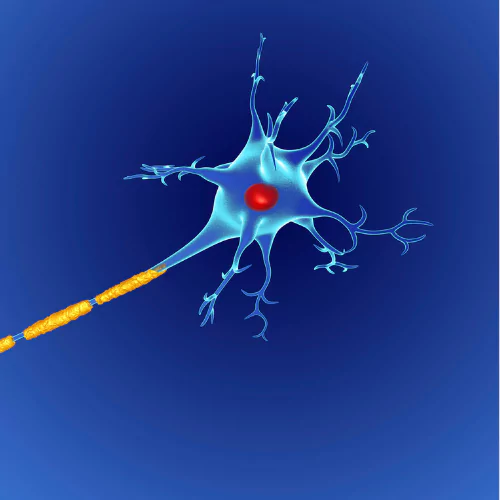Rheumatoid Arthritis: Causes, Symptoms, and Treatment

Rheumatoid arthritis (RA) is a chronic autoimmune disease that primarily affects the joints, causing inflammation, pain, stiffness, and swelling. Unlike osteoarthritis, which is caused by wear and tear of the joints over time, RA occurs when the immune system mistakenly attacks the body’s own tissues, particularly the synovium—the lining of the joints. Over time, this can lead to joint deformity, loss of function, and damage to other organs. While there is no cure for RA, early diagnosis and appropriate treatment can help manage symptoms and prevent complications.
Causes and Risk Factors
The exact cause of rheumatoid arthritis remains unknown, but researchers believe it results from a combination of genetic and environmental factors. Certain genetic markers, particularly the HLA-DR4 gene, are associated with an increased risk of developing RA. However, genetics alone do not trigger the disease; environmental factors such as smoking, infections, and exposure to pollutants may act as triggers in susceptible individuals. Women are more likely to develop RA than men, and the risk increases with age. Other potential risk factors include obesity, a history of viral infections, and an imbalance in gut bacteria, which may contribute to immune system dysfunction.
Symptoms of Rheumatoid Arthritis
RA symptoms often develop gradually and can vary from person to person. The most common early signs include joint pain, stiffness (especially in the morning or after periods of inactivity), and swelling in small joints such as the fingers, wrists, and toes. As the disease progresses, larger joints like the knees, elbows, and shoulders may also be affected. Unlike osteoarthritis, which primarily affects one side of the body, RA typically presents symmetrically, meaning both hands or both knees are affected simultaneously. In addition to joint symptoms, RA can cause fatigue, fever, weight loss, and inflammation in other areas such as the heart, lungs, and eyes. Some individuals may experience flare-ups—periods of increased symptoms—followed by periods of remission.
Diagnosis and Testing
Diagnosing RA can be challenging, as its symptoms can mimic other inflammatory or autoimmune conditions. Doctors typically use a combination of medical history, physical examination, and laboratory tests to confirm the diagnosis. Blood tests such as rheumatoid factor (RF) and anti-cyclic citrullinated peptide (anti-CCP) antibodies can indicate RA, while elevated levels of C-reactive protein (CRP) and erythrocyte sedimentation rate (ESR) signal inflammation. Imaging tests such as X-rays, ultrasounds, or MRIs can help assess joint damage and monitor disease progression. Early diagnosis is crucial for preventing long-term complications and joint deformities.
Treatment and Management
Although there is no cure for rheumatoid arthritis, various treatments aim to reduce inflammation, relieve pain, and slow joint damage. Medications play a key role in managing RA, with disease-modifying antirheumatic drugs (DMARDs) being the first-line treatment. Methotrexate is one of the most commonly prescribed DMARDs, helping to suppress the overactive immune response. Biologic drugs, such as tumor necrosis factor (TNF) inhibitors and interleukin inhibitors, target specific components of the immune system to reduce inflammation. Nonsteroidal anti-inflammatory drugs (NSAIDs) and corticosteroids are often used for short-term symptom relief.
Lifestyle modifications, including regular exercise, physical therapy, and maintaining a healthy weight, can improve mobility and reduce joint strain. Low-impact exercises such as swimming, yoga, and walking can help keep joints flexible while strengthening surrounding muscles. A balanced diet rich in anti-inflammatory foods, such as omega-3 fatty acids, fruits, and vegetables, may also help manage symptoms. In severe cases where joint damage is extensive, surgical options such as joint replacement or synovectomy (removal of the inflamed joint lining) may be considered.
Living with Rheumatoid Arthritis
Managing rheumatoid arthritis requires a comprehensive approach that includes medical treatment, lifestyle changes, and emotional support. Since RA is a chronic condition, individuals must work closely with healthcare providers to adjust treatment plans as needed. Support groups, counseling, and mindfulness techniques can help individuals cope with the emotional and psychological aspects of living with a long-term illness. With advancements in treatment, many people with RA can lead active, fulfilling lives despite the challenges posed by the disease.
Conclusion
Rheumatoid arthritis is a complex autoimmune disease that affects millions of people worldwide. While it cannot be cured, early diagnosis and effective management can prevent severe joint damage and improve quality of life. Awareness, medical advancements, and ongoing research continue to provide hope for better treatments and improved outcomes for those living with RA. Anyone experiencing persistent joint pain, stiffness, or swelling should seek medical evaluation to ensure early intervention and proper care.





